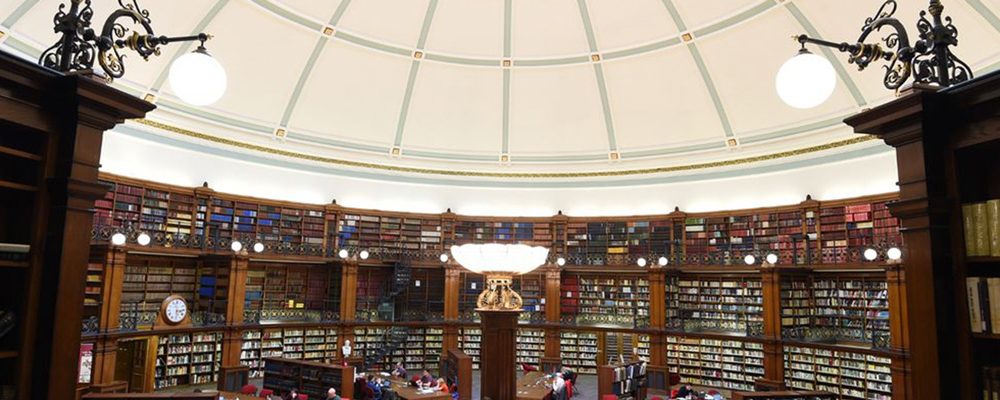Restoration and Reverberation at Liverpool Central Library
When American architect, Louis Sullivan, in 1896, said, “Form ever follows function” he probably hadn’t foreseen the creation of the Statutory List of Buildings of Special Architectural or Historic Interest that would have its origins in the devastation left in the wake of the Second World War.
The Challenge
The preservation of old buildings is challenging enough but additional issues arise when it comes to refurbishments and renovations, particularly if there is a material change of use. Suddenly, a building that was created for one purpose is given another, sometimes radically different, purpose. The form can’t follow the function if the function is allocated post-construction. Significant modifications can help align an old building with its new function but, in the case of Grade II listed buildings, for example, the interior can’t be fundamentally changed and function is forced to compromise.
Even when there is no significant change of use, modern building regulations demand performance standards that didn’t even exist at the time that buildings currently being renovated were originally envisioned and created. The requirements of Part E of the Building Regulations, governing soundproofing between floors of a building, are relatively easy to shoehorn into a renovation project as these tend to be concealed beneath floor finishes and screeds. Problems with reverberation are far more difficult to tackle and even though there is very little regulation surrounding this issue, BB93 of the Building Regulations, governing reverberation levels in schools, tends to be employed as an effective benchmark.
When reverberation levels reach a certain point, they can become more than just an irritation, with the overlap between what is currently being said and what was said a couple of seconds ago becoming genuinely disruptive. In schools, this can make it extremely difficult for children to follow what their teacher is saying. For this reason, BB93 demands a reverberation time of 0.8 seconds or less, with 0.4 seconds being seen as ideal. Reverberation time is described as the time taken for the sound pressure to fall by 60 decibels after the original sound has ceased abruptly. So, in the case of BB93, 0.8 seconds or less after a sound has been made, that sound should have decreased by 60dB. 60dB is a significant drop, the difference between a construction site with pneumatics drills and a busy department store.
It is in situations like this, when form and function appear determined to have nothing to do with one another, that architects and the designers of construction materials are driven towards increasingly innovative and paradigm-shifting solutions. The stereotype of the architect who is concerned only with form and is completely disinterested in function is, thankfully, a thing of the past (if these individuals ever really existed at all). Modern architects don’t create buildings so much as living and working spaces, where physical aesthetics are neatly balanced with a host of other concerns, such as the quality of an environment’s acoustics.
Although regulation sets crucial, legally-enforceable parameters, few architects need to be incentivised to aim high when it comes to a building’s acoustics.
This drive towards innovation has resulted in widely differing solutions. Reflector panels and diffusers redirect sound waves or disburse them more evenly through the listening environment, reducing nuisance noise. These solutions tend to be employed in lecture halls or auditoria, where a certain amount of volume is desirable, but the quality of the sound is crucial. The most commonly employed anti-reverberation product is the sound absorption panel. These fabric covered panels are mounted on the walls of a room or suspended from the ceiling. When the sound wave enters the open cell structure or fibrous composition of the panel, it bounces around like a pinball. The friction resulting from each instance of impact is converted into low-level heat which is absorbed into the material. When the sound wave re-emerges, its energy, and consequently its ‘loudness’, is significantly diminished. This tends to be the solution of choice for classrooms and is generally considered to be the quickest and most cost-effective route to BB93 compliance.
Some acoustic challenges are more demanding than others. The renovation of the Picton Reading Room, part of the £50 million redevelopment of Liverpool Central Library, being a case in point. Not only is the reading room contained within a Grade II listed building, it also boasts an elaborate coffered saucer dome. Domes are something of an acoustician’s nightmare, as they focus rather than distribute sound, exacerbating reverberation problems. All of which means a dropped pencil in the Picton Reading Room sounds like a Keith Moon drum solo. Why Cornelius Sherlock, the reading room’s architect, decided to incorporate a dome – one 100 feet in diameter and 56 feet high – into his design for a space that was intended for quiet study is a little bewildering, even if his work does predate Sullivan’s remarks by a couple of decades.
Thousands of hours of work have gone into restoring the ceiling of the Picton Reading Room, with plaster, paint and gold leaf being matched as closely as possible to the original 1875 design. Given the need to be true to the form of the original, certain anti-reverberation solutions were unworkable. Reflectors, diffusers and baffles couldn’t be suspended from the ceiling, as all those thousands of hours of work would be hidden from view and the Nineteenth Century aesthetics undermined. Wall-mounted sound absorption panels were not a viable option, as there was very little wall to speak of, with three levels of solid wood bookshelves encircling the room, almost up to the beginning of the dome.
Recent innovations in the area of acoustic plaster held the solution. Sound absorbent plaster has been around for some years, offering a smooth appearance which conceals a porous, granular structure similar to that found in sound absorption panels. However, until recently, the amount of sound absorption offered has always been limited to Class ‘B’ and Class ‘C’. Now, however, Class ‘A’ acoustic plaster systems are available. It was just such an acoustic plaster that CMS Danskin used for the Liverpool Central Library project.
Because of the limited surface area in the Picton Reading Room, Ellie Morris, CMS Danskin’s Technical Support Coordinator, hit upon the idea of applying the acoustic plaster into the soffits beneath the balconies of the upper shelving areas. The results were a resounding (or un-resounding) success. A relatively small amount of an innovative product, cleverly applied brought a 138-year old listed building’s acoustics in line with contemporary standards and not a hint of compromise in sight.



Comments are closed.